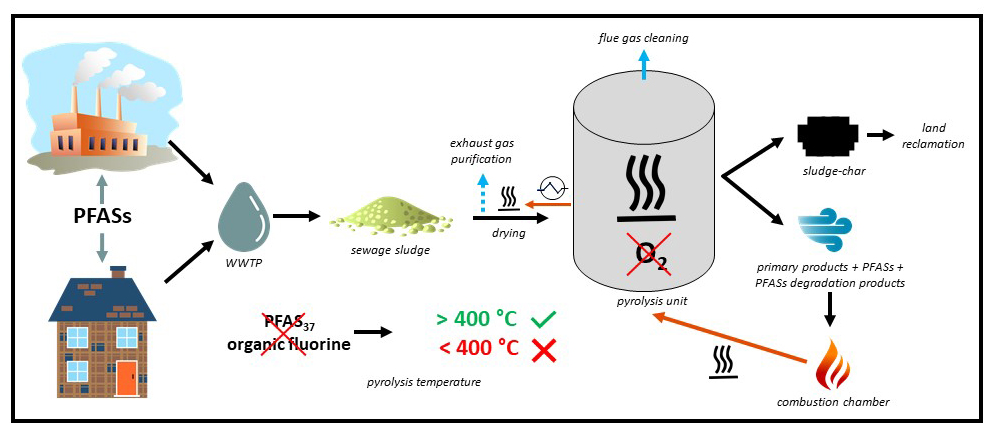Removal of per- and polyfluoroalkyl substances and organic fluorine from sewage sludge and sea sand by pyrolysis
Per- and polyfluoroalkyl substances (PFAS), in addition to their valuable properties for industry (hydrophobicity, non-flammability, oleophobicity, thermal conductivity), have negative effects on animal and human health (carcinogenicity, increased cholesterol, impact on the fetus in the mother’s body). One of the ways they enter the environment is through sewage sludge.
Our new research, led by Assoc. Prof. Pohorely, published in the journal Biochar, looks at the efficiency of pyrolysis in removing PFAS and organic fluorine from sewage sludge. The study focused on the issue of treating sewage sludge at different temperature conditions to identify the minimum safe temperature for the complete removal of these substances. The research showed that more than 95 % of the PFASs analyzed were removed at 400 °C. However, PFAS may not be completely mineralized or evaporated (converted to primary pyrolysis gas) but only cleavage into unanalyzed PFASs and other organofluorine substances. Therefore, we also analyzed the organic fluorine by combustion ion chromatography (CIC) to confirm that the sludge-char (solid product after sewage sludge pyrolysis) did not contain PFASs or their organic residues. Based on the data obtained, a suitable temperature of 400 °C was confirmed to remove more than 95 % of the organic fluorine in the sludge char. This finding was verified on a commercial pyrolysis unit operating at 600 °C. In addition to these issues, the paper also addresses the transition of PFASs and organofluorine into the pyrolysis gas and the behavior of PFAS and organofluorine in the homogeneous environment of pyrolyzed, artificially contaminated sea sand. The research was conducted in collaboration with several research institutions, including the Institute of Microbiology of the Czech Academy of Sciences; the Department of Power Engineering and Department of Sustainable Fuels and Green Chemistry at the University of Chemistry and Technology, Prague; and the Faculty of Environmental Sciences, Czech University of Life Sciences.
- Hušek M., Semerád J., Skoblia S., Moško J., Kukla J., Beňo Z., Jeremiáš M., Cajthaml T., Komárek M., Pohořelý M.*: Removal of per- and polyfluoroalkyl substances and organic fluorine from sewage sludge and sea sand by pyrolysis. Biochar 2024, 6, 31. doi.org/10.1007/s42773-024-00322-5
